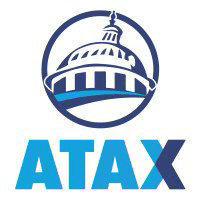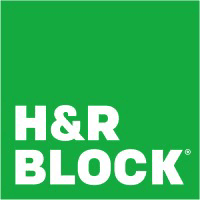Not sure if Charles Schwab is right for you?
Talk to a Franchise Advisor who can match you with your perfect franchise based on your goals, experience, and investment range.
Talk to an Expert
Charles Schwab
How much does Charles Schwab cost?
Initial Investment Range
$78,500 to $222,225
Franchise Fee
$25,000 to $50,000
The Independent Branch Leader (“IBL”) will operate a branch office (“Independent Branch”) of Charles Schwab & Co.® Inc., a registered broker-dealer and investment adviser, under the Charles Schwab trade name and logo and offer retail clients non-discretionary investment advice and access to a variety of approved financial products and services.
Enjoy our partial free risk analysis below
Unlock the full risk analysis to access 9 more categories covering 100+ risks.
Charles Schwab April 4, 2025 FDD Risk Analysis
Free FDD Library AI Analysis Date: August 19, 2025
DISCLAIMER: Not Legal Advice - For Informational Purposes Only. Consult With Qualified Franchise Professionals.
Franchisor Stability Risks
Start HereDisclosure of Franchisor's Financial Instability
Low Risk
Explanation
This risk was not identified. The audited financial statements in Exhibit I show Charles Schwab & Co., Inc. (Schwab) to be a large, highly profitable, and well-capitalized company with a strong balance sheet and positive net worth. Strong franchisor financials are important as they suggest the company has the resources to support its franchisees, invest in the brand, and fulfill its obligations under the Franchise Agreement without interruption.
Potential Mitigations
- An experienced franchise accountant should always review the franchisor's financial statements, including footnotes and the auditor's report.
- Discussing the franchisor's financial health and capitalization with your financial advisor can provide valuable context for your investment decision.
- It is advisable to have your attorney confirm that the provided financial statements comply with all federal and state disclosure requirements.
High Franchisee Turnover
Low Risk
Explanation
This risk was not identified. Item 20 data reveals very low franchisee turnover. Over the past three years, there were no terminations or franchises ceasing operations for other reasons, and only one non-renewal out of a system of over 90 franchises. Low turnover can be a positive indicator of franchisee satisfaction, profitability, and the overall health of the franchise system, suggesting that franchisees are generally succeeding and choosing to remain in the business.
Potential Mitigations
- You should still contact a number of current and former franchisees from the lists in Item 20 to discuss their experiences directly.
- Engaging a business advisor to help you analyze the franchise system's growth and turnover rates against any available industry benchmarks is a prudent step.
- Your attorney can help you formulate insightful questions for former franchisees about their reasons for leaving the system.
Rapid System Growth
Low Risk
Explanation
This risk was not identified. While the franchise system is growing, the rate of expansion shown in Item 20 (adding between 2 and 10 net new units per year recently) does not appear excessively rapid for a large, well-capitalized franchisor like Schwab. Managed growth is generally preferable, as it suggests the franchisor can scale its support systems for training, operations, and technology to adequately meet the needs of its new and existing franchisees.
Potential Mitigations
- Discuss the franchisor's infrastructure and staffing for franchisee support with your business advisor to ensure it is adequate for the current growth rate.
- Ask current franchisees, both new and established, about the quality and responsiveness of the support they receive from the franchisor.
- Your attorney can help you understand the franchisor's contractual obligations for support as outlined in Item 11 and the Franchise Agreement.
New/Unproven Franchise System
Low Risk
Explanation
This risk was not identified. The franchisor began offering franchises in 2011 and, as indicated in Item 20, has a substantial number of established franchised outlets. This indicates a mature system with a long operational history and a proven business model, rather than a new or speculative venture. An established system generally reduces risks associated with unproven concepts, brand recognition, and operational support structures.
Potential Mitigations
- A discussion with your business advisor can help you assess the franchisor's long-term track record and strategic direction.
- It is still beneficial to speak with long-term franchisees to understand how the system has evolved and adapted over the years.
- Your attorney can review the history of the franchise system as described in Item 1 and Item 2 of the FDD.
Possible Fad Business
Low Risk
Explanation
This risk was not identified. The franchise operates in the well-established financial services and investment advisory industry. Charles Schwab is a major, long-standing brand in this sector. This is not a business model based on a fleeting trend or fad, which reduces the risk of a sudden decline in consumer demand that could jeopardize the long-term viability of your investment.
Potential Mitigations
- Engaging a business advisor to research the long-term outlook and competitive landscape of the retail financial services industry is still a worthwhile exercise.
- Your financial advisor can help you assess how the specific services you will offer fit within the broader, evolving market.
- Even in established industries, it's wise to discuss the business's resilience to economic cycles with your accountant.
Inexperienced Management
Low Risk
Explanation
This risk was not identified. Item 2 shows that the franchisor's executive team consists of individuals with extensive, long-term experience in the financial services industry and within Charles Schwab itself. For example, the Head of Independent Branch Services has been with the company since 1995 and involved with the franchise program since its inception in 2011. An experienced management team is a positive factor, suggesting stable leadership and deep industry knowledge.
Potential Mitigations
- It is still beneficial to research the backgrounds of the key executives listed in Item 2 with the help of your business advisor.
- When speaking with current franchisees, you can inquire about their direct experiences and the quality of support from the leadership team.
- Your attorney can review Item 2 to ensure it provides the required information on the business experience of the franchisor's management.
Private Equity Ownership
Low Risk
Explanation
This risk was not identified. Item 1 of the FDD discloses that the franchisor, Charles Schwab & Co., Inc., is a wholly-owned subsidiary of The Charles Schwab Corporation, which is a publicly-traded company. The franchise is not owned by a private equity firm, which mitigates risks often associated with PE ownership, such as a focus on short-term returns over the long-term health of the brand and its franchisees.
Potential Mitigations
- Your attorney should review the corporate structure outlined in Item 1 to confirm the ownership details.
- Engaging a financial advisor to research the public parent company's performance and strategic goals can provide additional context.
- Understanding the ownership structure is a key piece of due diligence that your business advisor can assist with.
Non-Disclosure of Parent Company
Low Risk
Explanation
This risk was not identified. Item 1 clearly discloses the parent company, The Charles Schwab Corporation. Although the parent company's financial statements are not included in the FDD, the franchisor entity itself, Charles Schwab & Co., Inc., has provided its own robust, audited financial statements in Exhibit I. Because the franchisor is financially strong on its own, the absence of parent financials does not obscure the financial health of the entity you would be contracting with.
Potential Mitigations
- Your accountant should confirm that the franchisor's own financials are audited and meet all legal requirements.
- A discussion with your attorney can clarify whether a parent company guarantee is provided or legally required under these circumstances.
- As a public company, the parent's financial information is publicly available for review with your financial advisor if desired.
Predecessor History Issues
Low Risk
Explanation
This risk was not identified. Item 1 of the FDD explicitly states that the franchisor has no predecessors. This simplifies the due diligence process, as there is no hidden history from prior entities that could carry risks related to litigation, bankruptcy, or franchisee turnover into the current system. Your evaluation can focus solely on the history and performance of the current franchisor entity.
Potential Mitigations
- Your attorney should verify this statement in Item 1 as part of a comprehensive FDD review.
- Speaking with long-tenured franchisees can help confirm the operational history of the system as presented.
- Your business advisor can assist in researching the company's public history to ensure no unstated predecessors exist.
Pattern of Litigation
Low Risk
Explanation
Item 3 discloses several past regulatory actions and civil lawsuits. However, these appear to be primarily related to the broader operations of a large, highly-regulated financial institution and do not show a pattern of franchisee-initiated lawsuits alleging fraud or misrepresentation. The specific section for 'Franchisor/Franchisee Matters' states 'None,' which is a positive indicator. The disclosed litigation does not suggest a systemic problem within the franchise relationship itself.
Potential Mitigations
- A thorough review of all litigation disclosed in Item 3 with your attorney is essential to understand the nature and potential impact of these cases.
- Ask the franchisor to provide additional context on the regulatory actions and how they have since improved their compliance procedures.
- Your accountant can help assess whether any financial penalties paid by the franchisor could affect its stability, although they appear immaterial here.
Disclosure & Representation Risks
Example Risk: Franchisee Financial Obligations
Blue Risk
Explanation
This risk involves the financial obligations that a franchisee must meet, including initial fees, ongoing royalties, and other required payments. Understanding these obligations is crucial for long-term success.
Potential Mitigations
- Carefully review the Franchise Disclosure Document (FDD) and consult with a franchise attorney to fully understand all financial commitments before signing.
- Conduct regular risk assessments
- Implement monitoring and reporting systems
Unlock Full Risk Analysis
Purchase the complete risk review to see all 102 risks across all 10 categories.
Financial & Fee Risks
Example Risk: Franchisee Financial Obligations
Blue Risk
Explanation
This risk involves the financial obligations that a franchisee must meet, including initial fees, ongoing royalties, and other required payments. Understanding these obligations is crucial for long-term success.
Potential Mitigations
- Carefully review the Franchise Disclosure Document (FDD) and consult with a franchise attorney to fully understand all financial commitments before signing.
- Conduct regular risk assessments
- Implement monitoring and reporting systems
Unlock Full Risk Analysis
Purchase the complete risk review to see all 102 risks across all 10 categories.
Legal & Contract Risks
Example Risk: Franchisee Financial Obligations
Blue Risk
Explanation
This risk involves the financial obligations that a franchisee must meet, including initial fees, ongoing royalties, and other required payments. Understanding these obligations is crucial for long-term success.
Potential Mitigations
- Carefully review the Franchise Disclosure Document (FDD) and consult with a franchise attorney to fully understand all financial commitments before signing.
- Conduct regular risk assessments
- Implement monitoring and reporting systems
Unlock Full Risk Analysis
Purchase the complete risk review to see all 102 risks across all 10 categories.
Territory & Competition Risks
Example Risk: Franchisee Financial Obligations
Blue Risk
Explanation
This risk involves the financial obligations that a franchisee must meet, including initial fees, ongoing royalties, and other required payments. Understanding these obligations is crucial for long-term success.
Potential Mitigations
- Carefully review the Franchise Disclosure Document (FDD) and consult with a franchise attorney to fully understand all financial commitments before signing.
- Conduct regular risk assessments
- Implement monitoring and reporting systems
Unlock Full Risk Analysis
Purchase the complete risk review to see all 102 risks across all 10 categories.
Regulatory & Compliance Risks
Example Risk: Franchisee Financial Obligations
Blue Risk
Explanation
This risk involves the financial obligations that a franchisee must meet, including initial fees, ongoing royalties, and other required payments. Understanding these obligations is crucial for long-term success.
Potential Mitigations
- Carefully review the Franchise Disclosure Document (FDD) and consult with a franchise attorney to fully understand all financial commitments before signing.
- Conduct regular risk assessments
- Implement monitoring and reporting systems
Unlock Full Risk Analysis
Purchase the complete risk review to see all 102 risks across all 10 categories.
Franchisor Support Risks
Example Risk: Franchisee Financial Obligations
Blue Risk
Explanation
This risk involves the financial obligations that a franchisee must meet, including initial fees, ongoing royalties, and other required payments. Understanding these obligations is crucial for long-term success.
Potential Mitigations
- Carefully review the Franchise Disclosure Document (FDD) and consult with a franchise attorney to fully understand all financial commitments before signing.
- Conduct regular risk assessments
- Implement monitoring and reporting systems
Unlock Full Risk Analysis
Purchase the complete risk review to see all 102 risks across all 10 categories.
Operational Control Risks
Example Risk: Franchisee Financial Obligations
Blue Risk
Explanation
This risk involves the financial obligations that a franchisee must meet, including initial fees, ongoing royalties, and other required payments. Understanding these obligations is crucial for long-term success.
Potential Mitigations
- Carefully review the Franchise Disclosure Document (FDD) and consult with a franchise attorney to fully understand all financial commitments before signing.
- Conduct regular risk assessments
- Implement monitoring and reporting systems
Unlock Full Risk Analysis
Purchase the complete risk review to see all 102 risks across all 10 categories.
Term & Exit Risks
Example Risk: Franchisee Financial Obligations
Blue Risk
Explanation
This risk involves the financial obligations that a franchisee must meet, including initial fees, ongoing royalties, and other required payments. Understanding these obligations is crucial for long-term success.
Potential Mitigations
- Carefully review the Franchise Disclosure Document (FDD) and consult with a franchise attorney to fully understand all financial commitments before signing.
- Conduct regular risk assessments
- Implement monitoring and reporting systems
Unlock Full Risk Analysis
Purchase the complete risk review to see all 102 risks across all 10 categories.
Miscellaneous Risks
Example Risk: Franchisee Financial Obligations
Blue Risk
Explanation
This risk involves the financial obligations that a franchisee must meet, including initial fees, ongoing royalties, and other required payments. Understanding these obligations is crucial for long-term success.
Potential Mitigations
- Carefully review the Franchise Disclosure Document (FDD) and consult with a franchise attorney to fully understand all financial commitments before signing.
- Conduct regular risk assessments
- Implement monitoring and reporting systems
Unlock Full Risk Analysis
Purchase the complete risk review to see all 102 risks across all 10 categories.






